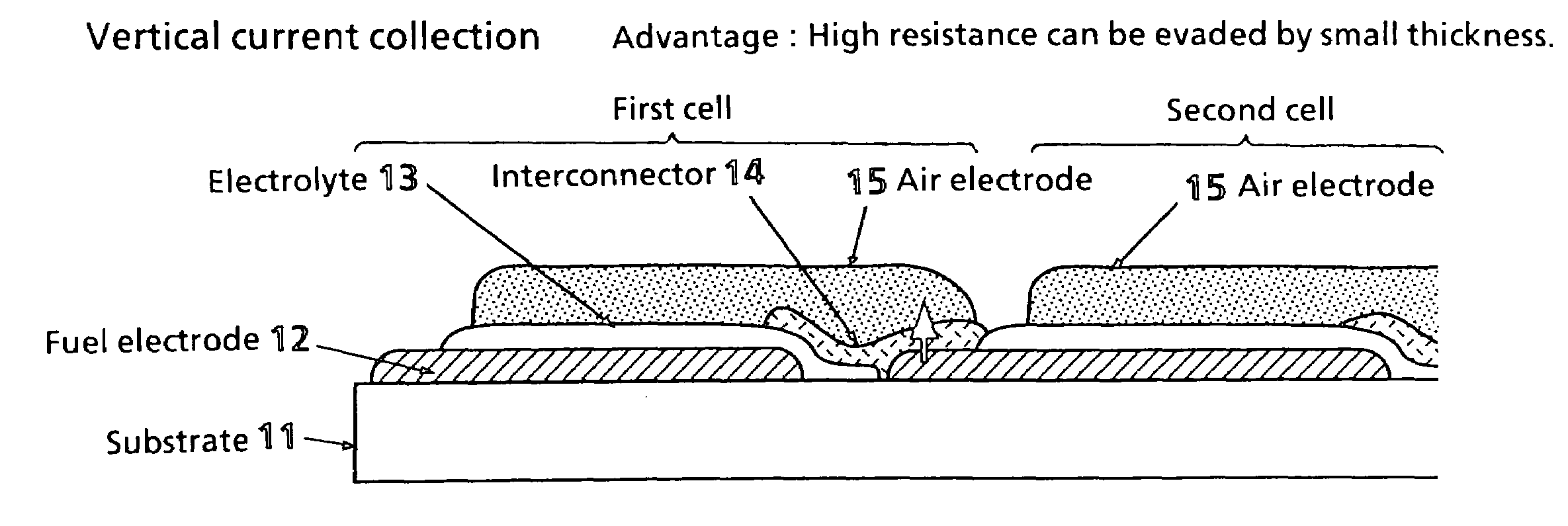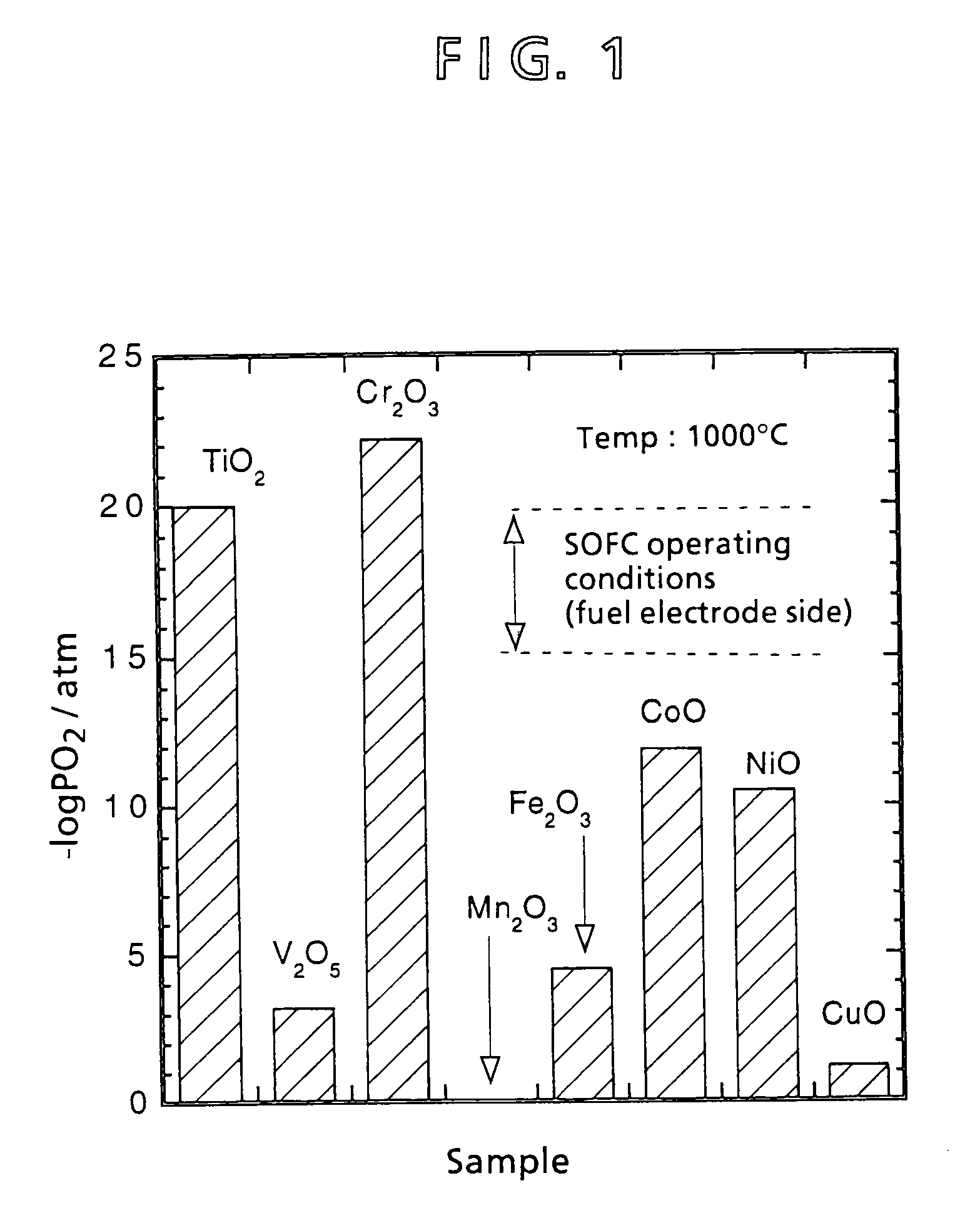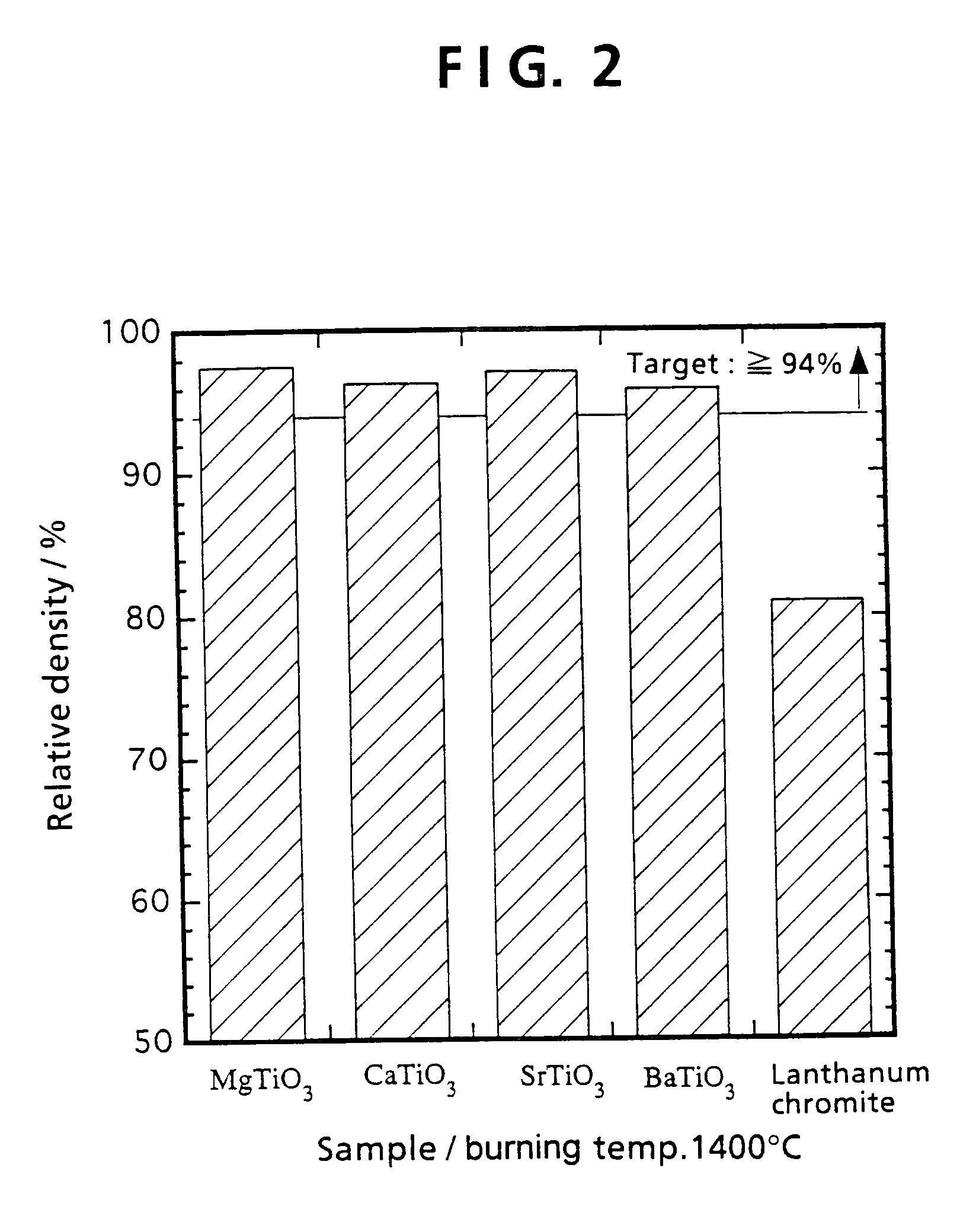Solid electrolyte type fuel battery
a fuel battery, solid electrolyte technology, applied in the direction of electrochemical generators, sustainable manufacturing/processing, final product manufacturing, etc., can solve the problems of reducing the output characteristics of the fuel battery, lanthanum chromite, in particular, is difficult to burn, and the material does not fully meet the required properties, etc., to achieve excellent durability and reliability, and the effect of easy production
- Summary
- Abstract
- Description
- Claims
- Application Information
AI Technical Summary
Benefits of technology
Problems solved by technology
Method used
Image
Examples
example 1
[0072]In inventing an interconnector different from a conventional lanthanum chromite interconnector, materials were preliminarily selected. Aside from lanthanum chromite, a material for an interconnector that fulfills thermal expansion characteristics, electric conductivity characteristics, and reduction expansion characteristics is selected in accordance with the following criteria:[0073]① Be an oxide (a metal other than the platinum group or even a nonoxide system ceramic is oxidized in the air of 1,000° C.).[0074]② Be a composite oxide (properties of a single-element oxide are difficult to control).[0075]③ Requires a transition metal (an element having a d-orbit electron) for imparting electric conductivity.
[0076]Lanthanoid series elements and actinoid series elements are difficult to accept because of a great energy gap and radioactivity, respectively. Second and third transition metals are also difficult to adopt because of their limited amounts as resources and firing propert...
example 2
[0092]Next, the present invention will be described in further detail with reference to concrete examples using MgTiO3 system interconnectors.
[0093]Example 1 shows that MgTiO3 system interconnectors exhibit better characteristics than lanthanum chromite. When an interconnector is to be used industrially for a solid electrolyte fuel battery, there is need to use interconnector materials mass produced by the ball mill mixing method described below, rather than the mortar mixing method mentioned in Example 1. Example 2 offers a more detailed explanation for the method of preparing materials, and the properties of the resulting interconnector.
[0094]First, MgTiO3 system materials and a LaCrO3 system material were prepared. The composition for the MgTiO3 materials was Mg1-xLaxTi1-yNbyO3 (x=0, 0.01, 0.05, 0.1, 0.2 and y=0, 0.01, 0.05, 0.1, 0.2), while the composition for the lanthanum chromite material was La0.8Sr0.2CrO3. Except that strontium carbonate was used as the Sr material, all the...
example 3
[0121]Next, the present invention will be described in more detail with reference to concrete examples using a CaTiO3 system interconnector. Example 2 demonstrated MgTiO3 interconnectors to exhibit better characteristics than lanthanum chromite. Whereas Example 3 describes in further detail the properties of CaTiO3 system interconnectors having Ca substituted for the Mg portion.
[0122]First, CaTiO3 system interconnectors were prepared in the same manner as in Example 2. The compositions for these interconnectors contained La, Cr, Y, Sm and Al partially substituting for the Ca site (A site), or Nb or Ta partially substituting for the Ti site (B site). Since a CaTiO3 system is also an n-type semiconductor, other elements can be added by the valence control method, as indicated in Example 2.
[0123]FIGS. 14 and 15 show the relative densities of burned CaTiO3 system products with the varied amounts of La and Nb added. FIGS. 14 and 15 reveal that even after burning at 1,400° C., the relativ...
PUM
 Login to View More
Login to View More Abstract
Description
Claims
Application Information
 Login to View More
Login to View More - R&D
- Intellectual Property
- Life Sciences
- Materials
- Tech Scout
- Unparalleled Data Quality
- Higher Quality Content
- 60% Fewer Hallucinations
Browse by: Latest US Patents, China's latest patents, Technical Efficacy Thesaurus, Application Domain, Technology Topic, Popular Technical Reports.
© 2025 PatSnap. All rights reserved.Legal|Privacy policy|Modern Slavery Act Transparency Statement|Sitemap|About US| Contact US: help@patsnap.com



